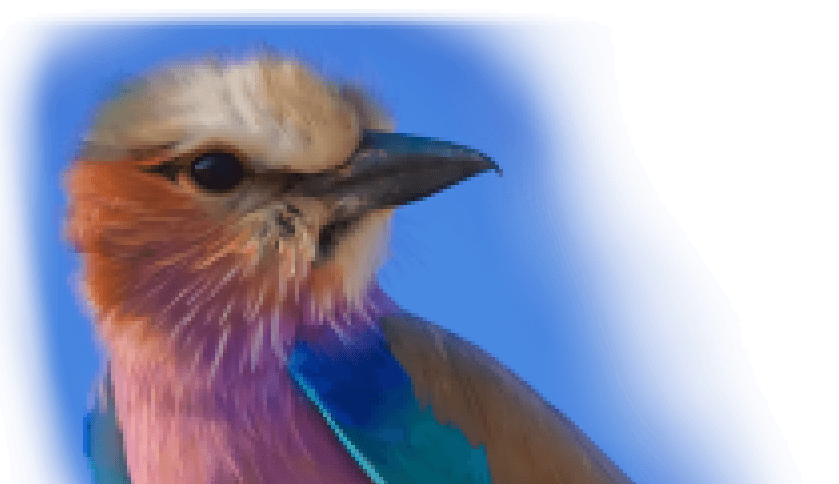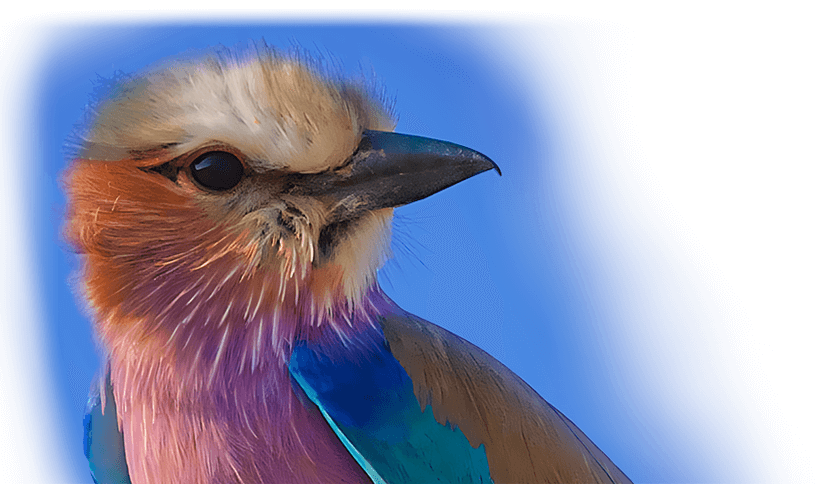3D AI art generators are tools which can transform simple text prompts, images, or videos into stunning three-dimensional models and animations. These powerful tools leverage advanced artificial intelligence to automate and accelerate the traditionally complex process of 3D modeling, making it accessible to artists, designers, game developers, and creators of all skill levels.
From generating realistic human avatars and intricate environments to crafting animated characters and interactive experiences, the best AI 3D generators offer diverse features tailored to various creative needs. Whether you seek ease of use, high-quality outputs, real-time collaboration, or seamless integration with popular 3D software, this blog explores 7 best AI-powered 3D art generators shaping the future of digital design and content creation. Check them now.
1. Spline
Spline is a web-based 3D AI art generator designed to simplify 3D content creation by transforming text prompts and 2D images into 3D models quickly. It offers an intuitive, beginner-friendly interface that requires no prior 3D modeling experience, making it accessible for artists, designers, and teams alike.
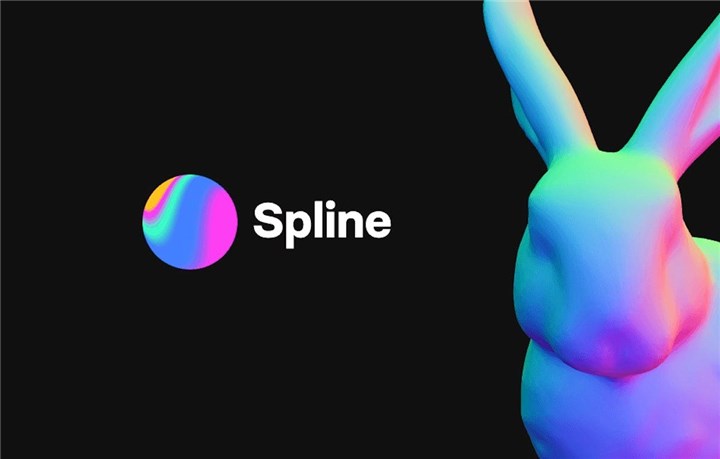
One of Spline's key strengths is its real-time collaboration feature, allowing multiple users to work simultaneously on projects with individual permissions, streamlining teamwork without file exchanges. The platform also supports exporting and embedding 3D content across web, Apple, and Android platforms, broadening its application scope.
Spline excels at fast prototyping, generating four variants from text or image inputs within seconds, which users can remix to expand their creative options. Its editor offers versatile tools for adjusting lighting, materials, animations, and physics, enabling the creation of interactive 3D experiences and game controls. The in-app AI assistant allows users to modify objects through natural language commands, speeding up the design process.
However, Spline's AI 3D generation has limitations. The range of available AI prompts is limited on free plans, and better prompts require paid subscriptions with AI credits, making extensive use costly. The quality of AI-generated models can be inconsistent and sometimes less polished compared to specialized tools. Customization options, while useful, are not as advanced as professional 3D software. Some users find the interface overwhelming due to its many features, and performance may lag with complex or high-resolution models. The effectiveness of AI generation heavily depends on the quality of text prompts, which can restrict creativity for some users.
Pros
- Intuitive, beginner-friendly interface
- Fast 3D model generation from text and images
- Real-time team collaboration with permissions
- Comprehensive 3D editing, animation, and physics tools
- Cross-platform export and embedding options
Cons
- Limited AI prompt variety on free/low-tier plans
- AI-generated model quality can be inconsistent
- Requires paid subscription for full AI features
- Customization less advanced than professional 3D software
- Learning curve and potential performance issues with complex scenes
2. Masterpiece Studio
Masterpiece Studio is a comprehensive AI-powered 3D creative suite designed primarily for indie creators, animators, architects, and game developers who want to streamline the 3D content creation process. It stands out by combining generative AI capabilities with VR-based tools, allowing users to create, edit, rig, animate, and deploy 3D models and environments efficiently.
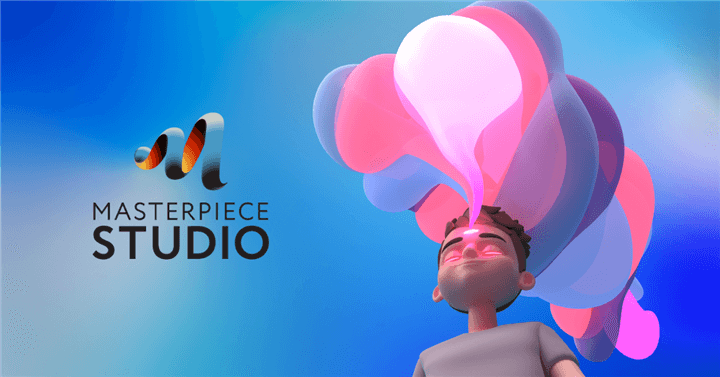
One of Masterpiece Studio's key strengths is its ability to generate 3D characters either from scratch or by uploading photos, making character creation fast and accessible even for users without extensive 3D modeling experience. The platform also offers powerful animation features, including motion capture and blend shape tools, which enable realistic facial expressions and dynamic movements. This makes it suitable for game development, film, and other animation projects.
Masterpiece Studio integrates smoothly with popular 3D software such as Blender, Maya, and Unity, allowing users to export their creations and incorporate them into existing workflows. Its VR environment provides an immersive, hands-on modeling experience that simplifies complex tasks like rigging and skinning through automation and machine learning. This approach reduces the technical barrier and speeds up production cycles.
However, the platform currently lacks multi-platform deployment and real-time collaboration features, which might limit team workflows. While it offers a free tier for non-commercial use, advanced features and enterprise plans come at a cost. The user base is still growing, so community support and extensive reviews are somewhat limited.
Pros
- AI-powered 3D character creation from photos or scratch
- Robust animation tools including motion capture and blend shapes
- VR-based immersive modeling environment
- Integration with popular 3D software and game engines
- Streamlines complex tasks like rigging and skinning with AI automation
- Free tier available for non-commercial use
Cons
- No real-time collaboration or multi-platform deployment
- Limited community and user reviews currently
- Paid plans required for full feature access
- VR setup may require additional hardware and learning curve
3. Meshcapade
Meshcapade is a 3D AI-driven platform specializing in generating realistic and customizable 3D human avatars and motions from various inputs, such as text, videos, and images. It is designed for professionals in gaming, animation, VR/AR, and fashion who require high-quality, accurate, and versatile human models without the need for extensive manual work.
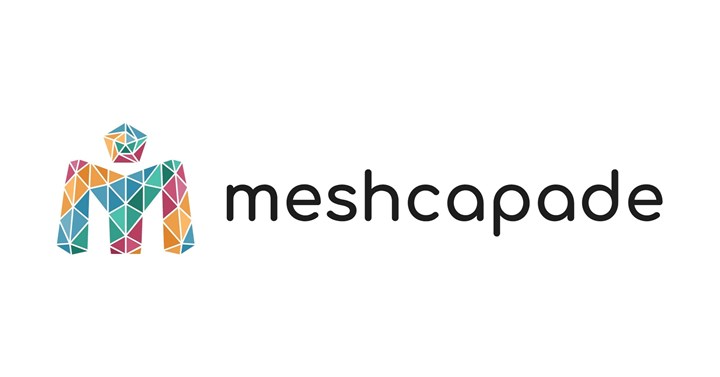
One of Meshcapade's key strengths lies in its ability to create avatars from a single image or video, accurately capturing body shape and pose. This is particularly useful for rapid character prototyping, virtual try-on applications, and generating realistic human models for simulations. The "Motion from Text" feature allows users to describe desired movements and instantly apply them to avatars, streamlining animation workflows.
The platform ensures high levels of realism and detail by leveraging advanced AI algorithms trained on vast datasets of human anatomy and motion. This results in avatars with accurate proportions, realistic textures, and natural movements. Meshcapade also offers extensive customization options, allowing users to adjust body shape, clothing, and other attributes to match specific requirements.
However, Meshcapade is primarily focused on human avatars and motion, which may limit its versatility for users needing a broader range of 3D objects or environments. The pricing model is not readily available on their website, requiring direct contact for specific plans. Also, the quality of results depends heavily on the input data, with poor-quality images or videos potentially leading to less accurate avatars.
Pros
- AI-driven generation of realistic 3D human avatars from images, videos, and text
- Accurate body shape and pose capture from single images or videos
- "Motion from Text" feature simplifies animation workflows
- High levels of realism and detail with accurate proportions and textures
- Extensive customization options for body shape, clothing, and attributes
Cons
- Primarily focused on human avatars and motion, limiting versatility
- Pricing information not readily available on the website
- Quality of results depends on input data quality
- May require some technical expertise for advanced customization
4. Flythroughs by Luma AI
Flythroughs by Luma AI is a tool designed to create professional-looking 3D flythrough videos from simple video recordings, using AI to enhance and stabilize the footage. It is aimed primarily at real estate professionals, interior designers, and anyone looking to showcase spaces in a dynamic and engaging way.
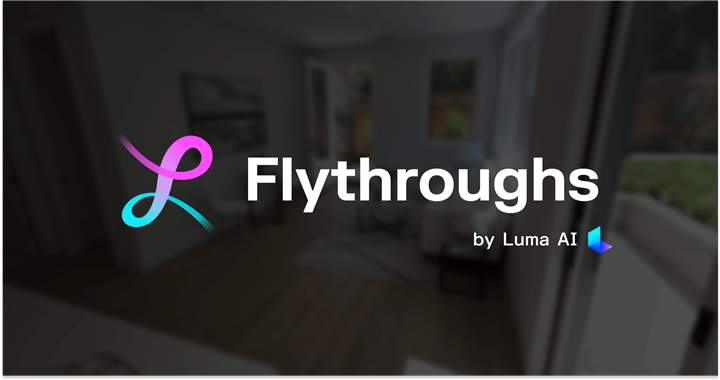
One of Flythroughs' key strengths is its ease of use. Users can record a casual video walkthrough using just their phone, and the AI handles the rest, generating cinematic 3D flythroughs in minutes. This eliminates the need for expensive equipment or specialized training, making it accessible to a broad audience.
The AI-powered platform stabilizes shaky footage and enhances visual quality, resulting in smooth, professional-looking videos that provide viewers with a better sense of the space. It also allows users to add details and customize the flythrough to highlight key features.
However, Flythroughs is specifically tailored for creating flythrough videos of spaces and is not a general-purpose 3D AI art generator. Its capabilities are limited to transforming videos into enhanced 3D walkthroughs, which may not suit users seeking to generate different types of 3D content. The quality of the output heavily depends on the input video, and poorly recorded videos may not produce optimal results.
Pros
- Creates professional-looking 3D flythrough videos from casual video recordings
- Easy to use, requiring no specialized equipment or training
- AI-powered stabilization and enhancement of footage
- Quick generation of cinematic flythroughs
- Cost-effective solution for showcasing spaces
Cons
- Limited to creating flythrough videos of spaces; not a general 3D AI tool
- Output quality heavily depends on input video quality
- Lacks broader 3D content creation features
5. 3DFY AI
3DFY AI is an AI-powered 3D model generation platform that aims to provide scalable 3D asset creation, targeting both individual creators and enterprise clients. It offers solutions ranging from text-to-3D generation to image-to-3D services, intending to automate and streamline the 3D modeling process.
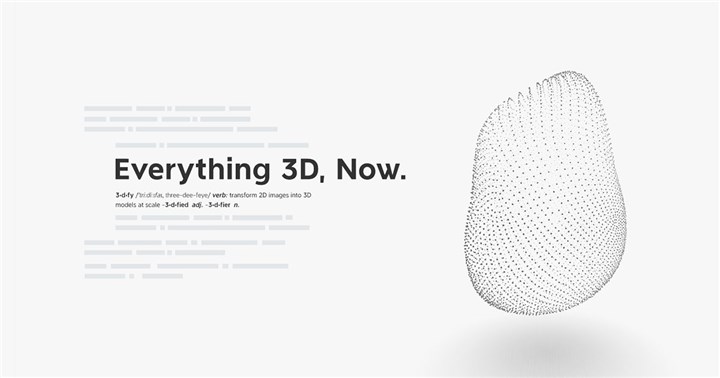
One of 3DFY AI's key strengths is its focus on high-quality 3D assets generated automatically, without compromising standards typically achieved by human modelers. The platform is designed for scalability, enabling mass creation of 3D models for various applications, including AR/VR ecosystems, robotics, and autonomous vehicles. It also caters to retailers by creating 3D assets for online storefronts to boost sales and reduce returns.
3DFY AI provides a text-to-3D web service for individual creators (beta coming soon) and a text-to-3D API for enterprise integrations. They also offer a massive 3D dataset generation service for enterprise customers needing custom 3D item collections. The platform also plans to offer an image-to-3D service for individuals and enterprises, though details are yet to be announced.
However, since the text-to-3D web service is still in beta, there may be limited access and functionality for individual creators at the moment. Also, the image-to-3D service is yet to be announced, so its capabilities and availability are unknown.
Pros
- AI-powered 3D model generation with a focus on high-quality assets
- Scalable solutions for mass creation of 3D models
- Offers text-to-3D and planned image-to-3D services
- Caters to both individual creators and enterprise clients
- Aims to automate and streamline the 3D modeling process
Cons
- Text-to-3D web service is in beta, with limited access and functionality
- Image-to-3D service is yet to be announced, with unknown capabilities
- Limited information on pricing and subscription plans
- Heavy reliance on AI may limit creative control for advanced users
6. RODIN Diffusion
RODIN Diffusion from Microsoft is a research project focused on generating high-quality 3D head avatars from single-view images using diffusion models. It stands out by creating detailed and realistic 3D faces that can be customized and animated.
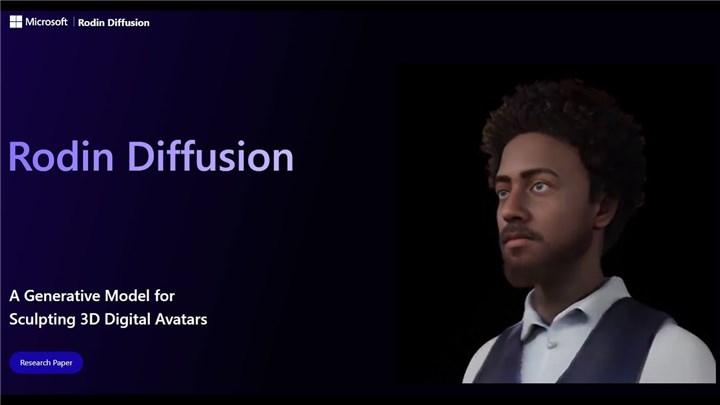
One of RODIN Diffusion's primary strengths is its ability to produce 3D head models with fine details, such as wrinkles, pores, and hair strands, from just one input image. This is achieved through a novel approach that combines diffusion models with 3D morphable models, enhancing both the realism and controllability of the generated avatars.
The method allows users to edit and customize the generated 3D heads, providing control over attributes like facial expressions, head pose, and lighting conditions. RODIN Diffusion aims to bridge the gap between 2D images and 3D avatars, enabling new possibilities for virtual communication, gaming, and personalized digital content.
However, as a research project, RODIN Diffusion is primarily focused on advancing the underlying technology and may not be readily available as a user-friendly product. Access to the model and its capabilities might be limited to researchers and developers. The generated avatars are focused on heads, limiting the creation of full-body avatars or other 3D objects.
Pros
- Generates high-quality, detailed 3D head avatars from single-view images
- Captures fine details like wrinkles, pores, and hair strands
- Combines diffusion models with 3D morphable models for enhanced realism and controllability
- Offers editing and customization options for facial expressions, head pose, and lighting
- Advances research in 3D avatar generation
Cons
- Primarily a research project; not readily available as a user-friendly product
- Access may be limited to researchers and developers
- Focused on generating head avatars only, not full-body models
- May require technical expertise to implement and use
7. Avaturn
Avaturn is a platform focused on generating realistic 3D avatars from selfie photos, designed to personalize experiences in gaming, campaigns, or the metaverse. It aims to transform a 2D photo into a recognizable and customizable 3D avatar, offering a wide range of body types, hairstyles, clothing, and accessories.
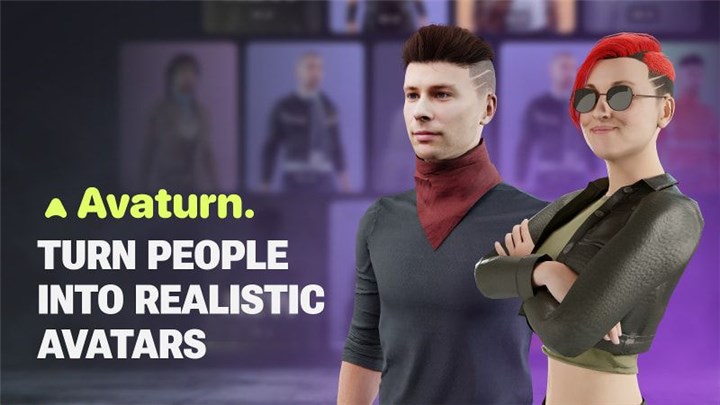
One of Avaturn's key strengths is its ease of use, turning gamers into in-game characters while retaining their true identity. Users can personalize avatars with over 10,000 different looks.
Avaturn avatars are compatible with standard humanoid body rigs, ARKit blendshapes, and visemes, and they can be integrated into Blender, Unity, Unreal Engine, Maya, Cinema4D, or any other 3D environment. They also support Mixamo animations and VTubing software, making them highly versatile for different applications.
However, Avaturn's primary focus is on avatar generation from photos, limiting the creation of other 3D objects or scenes. The platform's capabilities depend on the quality of the input photo, and the realism might vary based on the photo's clarity and lighting.
Pros
- Generates realistic 3D avatars from selfie photos
- Offers a wide range of customization options with over 10,000 looks
- Compatible with standard humanoid rigs, ARKit blendshapes, and visemes
- Integrates with popular 3D environments like Blender, Unity, and Unreal Engine
- Supports Mixamo animations and VTubing software
Cons
- Primarily focused on avatar generation, limiting the creation of other 3D objects
- Realism depends on the quality of the input photo
- Lacks broader 3D content creation features beyond avatar customization
Bonus Tip: The Best Practices and Tips for Creating and Optimizing 3D AI Art
Working with 3D AI art requires a different set of skills and techniques compared to traditional 3D art. So here we will explore some of the best practices and tips for creating and optimizing 3D AI art.
1. Define the Goal and Purpose of 3D AI Art
Before diving into creating 3D AI art, it's essential to define the goal and purpose of your artwork. Are you looking to create realistic landscapes, abstract sculptures, or something entirely unique? Understanding your artistic vision will help guide your decisions throughout the creative process.
2. Choose the Appropriate 3D AI Art Generator
There are several 3D AI art generators available, each with its own strengths and weaknesses. Take the time to research and experiment with different generators to find the one that best aligns with your artistic goals. Some popular options include DeepArt, ArtBreeder, and RunwayML.
3. Provide Clear and Relevant input and Feedback
When working with a 3D AI art generator, it's crucial to provide clear and relevant input to achieve the desired output. This could include selecting the style, colors, or objects you want to incorporate into your artwork. Additionally, providing feedback to the generator's output can help refine and improve the results. Experiment with different parameters and settings to achieve the desired look and feel.
4. Evaluate and Compare the Output and Performance
Not all 3D AI art generators are created equal. It's important to evaluate and compare the output and performance of different generators to select the best option for your needs. Consider factors such as visual quality, speed, and ease of use when making your decision.
5. Edit and Refine the 3D AI Art Output
While 3D AI art generators can produce impressive results, they often require some editing and refinement to achieve the desired outcome. Take the time to fine-tune the generated artwork, adding additional details, adjusting colors, or refining the composition. This step allows you to put your personal touch on the artwork and make it truly unique.
6. Test and Optimize the 3D AI Art Output
Once you have edited and refined your 3D AI art, it's important to test and optimize it for compatibility and functionality. Ensure that the artwork can be displayed and experienced on different devices and platforms. Test its performance, responsiveness, and compatibility with various software and hardware configurations.
7. Learn and Improve Your 3D AI Art Skills
As with any form of art, continuous learning and improvement are essential for mastering 3D AI art. There are various resources available to help you develop your skills and stay up-to-date with the latest techniques and trends. Consider taking online courses and tutorials, reading books and articles, following blogs and podcasts, and participating in forums and groups dedicated to 3D AI art. Engaging in contests and challenges can also provide valuable opportunities for growth and recognition.
Note: The Ethical and Legal Implications of Using 3D AI Art Generators
With great power comes great responsibility. While 3D AI art generators offer endless possibilities for artistic expression, it is important to approach their use with caution. The use of 3D AI art generators raises important ethical and legal challenges that we must address, including:
1. Ownership and Authorship of 3D AI Art
One of the key concerns surrounding 3D AI art generators is the issue of ownership and authorship. Who has the rights and responsibilities when it comes to 3D AI art? Unlike traditional art forms, where the artist creates the work from scratch, 3D AI art generators use algorithms to generate art based on existing data. This raises questions about who can claim ownership of the resulting artwork.
2. Plagiarism and Infringement of 3D AI Art
Another potential issue with 3D AI art generators is the risk of plagiarism and infringement. With the ability to generate art at the click of a button, there is a real danger of copying or violating existing works. Artists and designers must be cautious to ensure that their creations do not infringe upon the intellectual property rights of others.
3. Privacy and Security of 3D AI Art
The privacy and security of 3D AI art is another important consideration. When using 3D AI art generators, personal data and intellectual property may be at risk. Artists and designers must take steps to protect their work, including using watermarking and encryption to prevent unauthorized use and modification.
4. Quality and Reliability of 3D AI Art
While 3D AI art generators offer incredible potential, there are concerns about the quality and reliability of the generated art. These tools are only as good as the algorithms and data they are based on, and there is a risk of inaccurate or inauthentic results. Artists and designers should verify and validate the output and input of 3D AI art generators to ensure accuracy and authenticity.
5. Social and Cultural Impact of 3D AI Art
The social and cultural impact of 3D AI art should not be overlooked. As with any form of art, it is important to respect diversity and sensitivity. Artists and designers should be mindful of the context and audience of their 3D AI art, ensuring that it does not perpetuate harmful stereotypes or offend marginalized communities.
Tips and Recommendations for Using 3D AI Art Generators Ethically and Legally
To use 3D AI art generators in an ethical and legal manner, consider the following tips and recommendations:
- Cite and credit the sources and tools used to create 3D AI art. Give credit where credit is due, acknowledging the algorithms and data that contributed to the creation of your artwork.
- Seek permission and consent from the original creators and owners of 3D AI art. If you are using existing artwork as a basis for your creations, make sure to obtain proper permission and consent from the original artists.
- Use watermarking and encryption to prevent unauthorized use and modification of 3D AI art. By adding a watermark or encrypting your artwork, you can protect it from being used or altered without your permission.
- Verify and validate the output and input of 3D AI art generators. Take the time to check the accuracy and authenticity of the generated art, ensuring that it meets your standards and aligns with your creative vision.
- Be aware and mindful of the context and audience of 3D AI art. Consider the potential social and cultural implications of your artwork, striving to create art that is inclusive, respectful, and thought-provoking.




